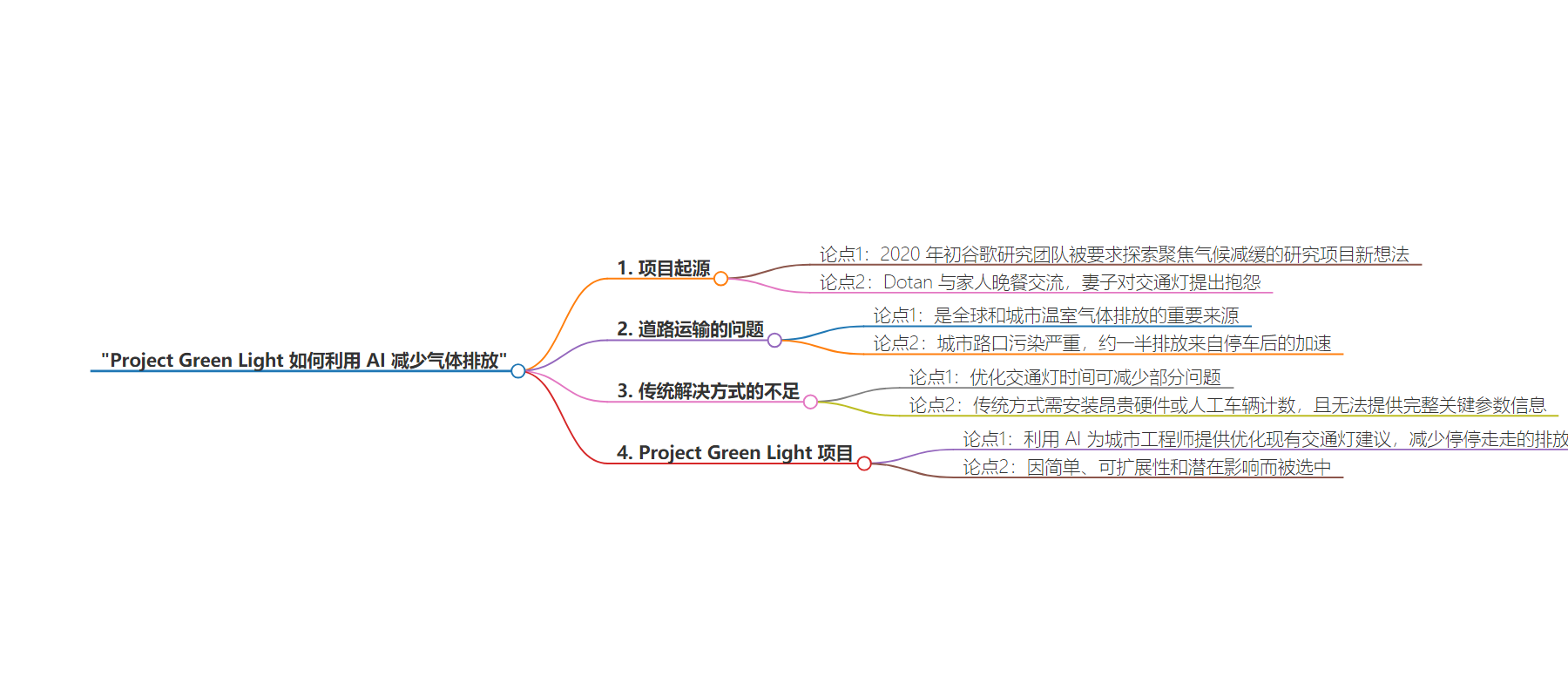包阅导读总结
1. 关键词:Project Green Light、AI、Gas Emissions、Traffic Lights、Google Research
2. 总结:2020 年初,谷歌研究团队受启发探索气候缓解研究项目,推出 Project Green Light,利用 AI 优化交通灯以减少停停走走的排放,因其简单、可扩展和潜在影响被选中。
3. 主要内容:
– 2020 年初,谷歌研究团队被要求探索加速气候缓解的研究项目。
– 某晚餐桌上,Dotan 与家人交流,妻子抱怨交通灯问题。
– 道路交通温室气体排放严重,尤其是城市路口,一半排放来自停车后加速。
– Dotan 团队发现优化交通灯时间可减少部分停停走走的交通,但传统方式有局限。
– 团队利用谷歌地图十多年的驾驶趋势数据,提出 Project Green Light 项目提案。
– 该项目用 AI 为城市工程师提供优化现有交通灯的建议,减少停停走走的排放,因其优点被选中。
思维导图:
文章地址:https://blog.google/outreach-initiatives/sustainability/google-ai-project-greenlight/
文章来源:blog.google
作者:Ari Marini
发布时间:2024/7/29 14:06
语言:英文
总字数:786字
预计阅读时间:4分钟
评分:80分
标签:人工智能在交通运输中的应用,气候缓解,交通优化,城市排放,可持续城市
以下为原文内容
本内容来源于用户推荐转载,旨在分享知识与观点,如有侵权请联系删除 联系邮箱 media@ilingban.com
At the start of 2020, a team within Google Research was asked to explore new ideas for research projects that focused on accelerating climate mitigation. “We were looking into all kinds of big ideas, from cultivated meat to energy to air pollution,” Dotan Emanuel, a software engineer on the team, says.
At the dinner table one evening, Dotan shared some of those big ideas with his family — and the conversation soon pivoted to a frustration familiar to many of us: “My wife Osnat said, ‘Why don’t you do something about traffic lights? We stand at them for no good reason,’” he recalls.
Road transportation is responsible for significant global and urban greenhouse gas emissions. It’s especially problematic at city intersections where pollution can be 29 times higher than on open roads, and about half of these emissions come from traffic accelerating after stopping. With millions of traffic lights across the world, the scale of the problem was huge — and if Google could do something to address it, so was the opportunity.
“My initial thought was that we can’t do anything about traffic lights,” Dotan says. “But when it comes to research, the most fascinating challenges lie in the unknown.”
With their curiosity sufficiently piqued, Dotan and his team dug into the mechanics of traffic engineering. They found that while some amount of stop-and-go traffic is unavoidable, a portion can be prevented by optimizing traffic light timing. To do that, cities traditionally needed to either install expensive hardware or run time-consuming manual vehicle counts, neither of which provide complete information on key parameters they need.
“We quickly understood we have a strong advantage that cities could benefit from — over a decade of Google Maps driving trends from across the globe,” Dotan says. “And a few weeks later, we had a project proposal ready.”
That proposal was for Project Green Light, an initiative that uses AI to make recommendations for city engineers to optimize existing traffic lights and reduce stop-and-go emissions. After evaluating dozens of other great ideas, Green Light was chosen for its simplicity, scalability and potential for impact.
